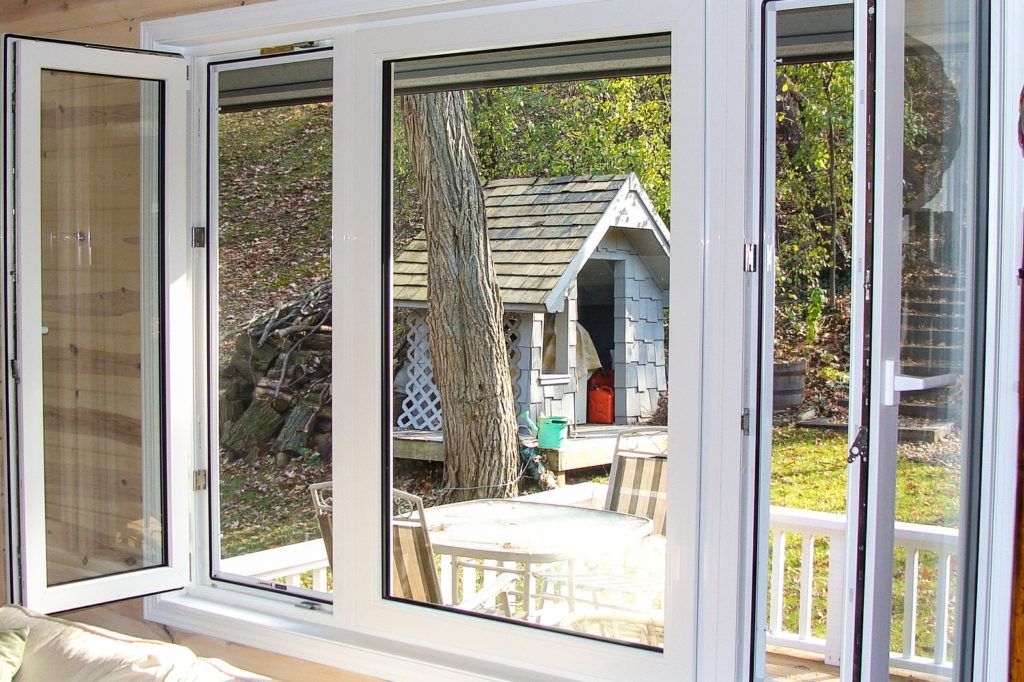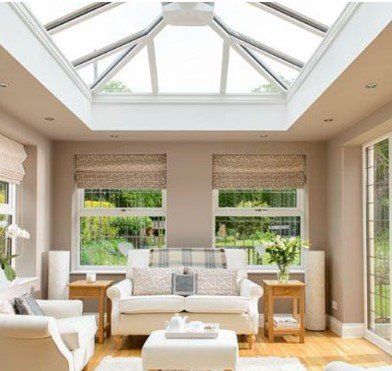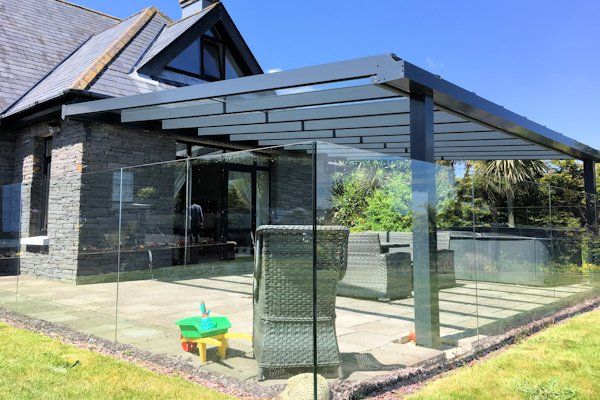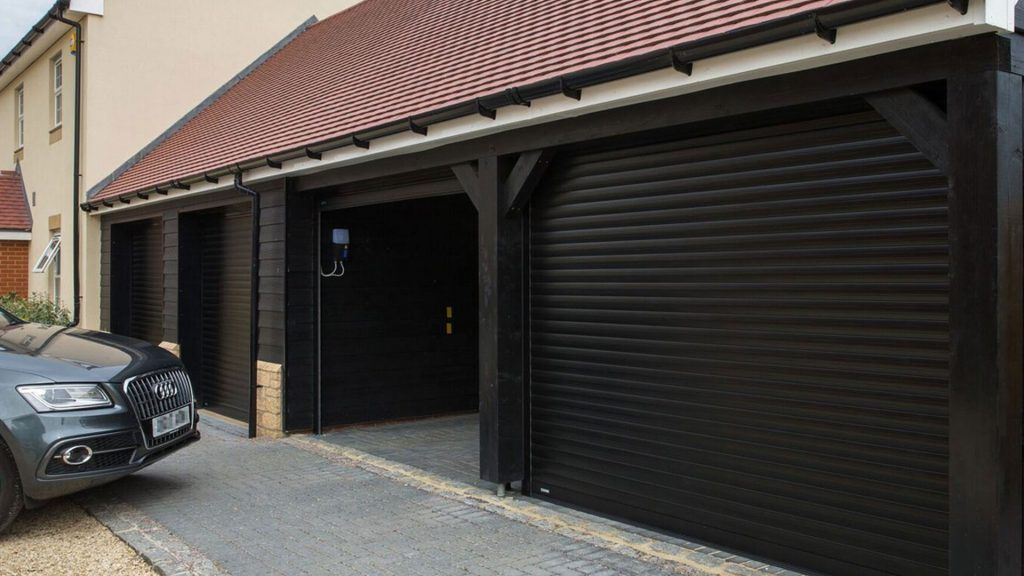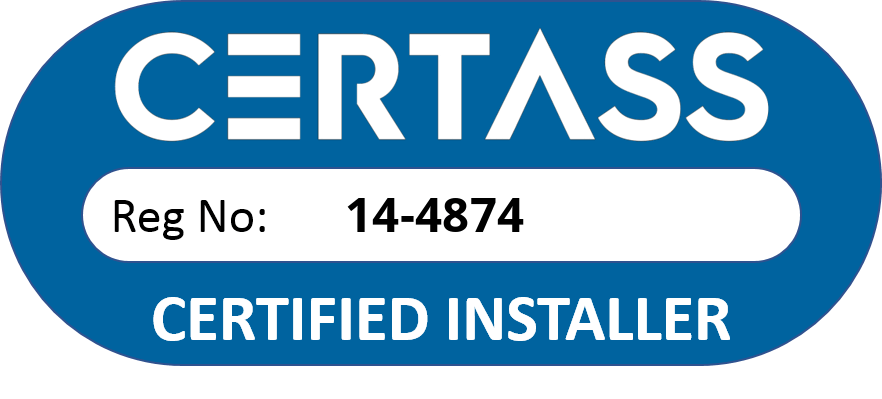FAQs
To help you understand the terms we use to describe our products we have put together a glossary of terms, please see below:
What is a lintel?
A lintel is a reinforced beam that is used above doors and windows to support the brickwork above. It prevents the weight of the structure from resting directly on the door or window.
Also known as: Concrete Lintel, Stone Lintel, Catnic Lintel, Steel Plate Lintel.
What is Low E glass?
Low E (low emissivity) glass is insulated and coated to help reduce energy loss through windows and doors.
Also known as: High level U value Glass, Planitherm Glass, Diamante Glass.
What is a Mortice Lock?
A Mortice Lock is a high-security lock fitted inside a door. It is often used on entrance doors for enhanced safety.
Also known as: 3 Hook Lock, 7 Point Lock, Locking System.
What is a Mullion?
A mullion is a vertical bar that divides windows or doors into separate sections.
Also known as: False Mullion, Dummy Mullion.
What is a Multipoint Locking System?
A multipoint locking system secures the door and frame together at multiple points for added security.
Also known as: High Security Locks, 8 Point Locking, Shoot Bolt, ESPAG Locking.
What is a Night Vent?
A night vent is a type of ventilation grill that allows airflow while keeping windows and doors secure.
Also known as: Trickle Vents, Ventilation Grills, Air Flow Vents, Grills.
What is a One Way Screw?
A one way screw is a self-tapping screw designed to be driven in one direction only, preventing tampering.
Also known as: Self Tapping Screw.
What is a Pane?
A pane refers to a single unit or panel of glass in a window or door.
Also known as: Panel of Glass, Unit, Glass Panel, Half Panel.
What is a Patio Door?
A patio door is a sliding glass door that typically opens onto a patio or garden area.
Also known as: Sliding Door, 2 Pane Patio, 3 Pane Patio, Internal Sliding Door.
What is a Plant On Bay?
A plant on bay is a floor-to-ceiling bay window you can walk into.
Also known as: Walk-In Bay, Walk-In Bow, Flat Roof Bay, Tiled Roof Bay.
What is a Profile?
A profile is a length of plastic used to manufacture window or door frames.
Also known as: Extrusion, Lengths, PVCU Lengths.
What does PVCu stand for?
PVCu stands for Polyvinyl Chloride Un-Plasticised, commonly used in window and door frames.
Also known as: uPVC, Plastic Windows.
What does Reinforcement mean in windows?
Reinforcement refers to materials added to windows and doors to strengthen them.
Also known as: Steel Reinforcement, Aluminium Reinforcement, Box Section, Hollow Section, T-Section.
What is Rendering?
Rendering is the process of covering the exterior brickwork of a house.
Also known as: Pebble Dash, Fine Rough or Smooth Render.
What is a Residential Door?
A residential door is the main entrance door to a home or property.
Also known as: Front Door, Main Door, Entrance Door, Outer Door.
What is a Reveal?
A reveal is the interior wall area directly beside a window or door frame.
Also known as: Window Ledge, Window Sill, Window Frame, Door Way, Window Cheeks.
What is a Restrictor Device?
A restrictor device limits how far a window can open, improving safety.
Also known as: Child Restrictor Locks, Fire Escape, Easy Clean.
What is a Sash?
A sash is a style of window that features sliding panes, typically moving up and down.
Also known as: Vertical Sliders, Top Light, Fan Light.
What is Sealant?
Sealant is used to seal gaps between the window or door and the wall to prevent water or air ingress.
Also known as: Rubber Seal, Silicone, Stelmax, Putty.
What is Secondary Double Glazing?
Secondary double glazing involves fitting an extra internal glass frame to existing windows.
Also known as: Internal Glazing, Glazing Kits.
What is a Shootbolt?
A shootbolt is a locking mechanism used in windows to increase security.
Also known as: Finger Bolts, Hook Locks.
What are Side Lights?
Side lights are panels, often glazed, located beside a door.
Also known as: Side Panels, Glass Panels.
What is a Sill/Cill?
A sill or cill is the external ledge at the bottom of a window.
Also known as: 150mm Cill, 180mm Cill, Window Ledge, External Cill.
What is a Snib?
A snib is a latch that allows a door lock to be held open.
Also known as: On the Latch.
What is a Soffit?
A soffit is the underside of the roof overhang on the exterior of a house.
Also known as: Eaves Board, Hollow Board, Roof Eaves Boarding, Fascias.
What is a Spindle?
A spindle is the internal mechanism inside a window or door handle.
Also known as: Split Spindle, Thumb Lock.
What is Surveying?
Surveying involves inspecting and measuring a site in detail to prepare for installation.
Also known as: Measuring Up, Site Survey, Site Measure.
What is Tempered Glass?
Tempered glass is toughened safety glass that shatters into blunt pieces rather than sharp shards.
Also known as: Shatterproof Glass, Safety Glass, Treated Glass.
What is a Thermal Break?
A thermal break is a gap or material (often a gas) in insulated glass units that helps prevent heat transfer.
Also known as: Spacer Bars, Reinforced Thermal Bars, Thermal Bars.
What is a Thumbturn?
A thumbturn is a locking mechanism for doors and windows operated by turning a knob rather than using a key.
Also known as: Spindle Lock, Lock and Key Device.
What is a Transom?
A transom is a horizontal bar dividing a window or door into sections.
Also known as: False Transom, Dummy Transom.
What is a Tilt and Turn Window?
A tilt and turn window opens inwards and can tilt from the top for ventilation or swing in for cleaning.
Also known as: Swivel Window, Tilt Windows, Inwards Opening Windows, Push Out Window.
What does Toeing and Heeling mean?
Toeing and heeling is a fitting technique used to properly support and align doors during installation.
Also known as: Packing Glass, Fitting Packers.
What is Toughened Glass?
Toughened glass is glass that has undergone a heat-treatment process for added strength and safety.
Also known as: Safety Glass, 6mm Glass, Pilkington Glass.
What is a Vertical Sliding Window?
A vertical sliding window features two glass panes that slide vertically within the frame.
Also known as: Sash Windows, Tilt and Turn, Top Light, Fan Light.
What are Window Boards?
Window boards are internal sills located at the bottom of a window on the inside of a room.
Also known as: Duraboard, Softwood Boards, Window Cills, Window Ledges.
What is a Wood Grain Finish?
A wood grain finish is a foil-wrapped surface that gives PVCu or aluminium windows and doors a wood-like appearance.
Also known as: Oak Windows and Doors, Mahogany Windows and Doors, Wood Grain Windows, Wood Effect Windows, Rosewood Windows, Stain Grain Windows.
What is double glazing?
Double glazing is a window system that uses two panes of glass separated by a sealed gap filled with air or gas (usually argon) to improve insulation and energy efficiency in your home.
What are the benefits of double glazing?
Double glazing helps reduce heat loss, lowers energy bills, improves home security, reduces noise from outside, and minimises condensation on windows.
Is triple glazing better than double glazing?
Triple glazing offers an additional layer of insulation and noise reduction, but it can be more expensive and may not be necessary for every property. Double glazing is usually sufficient for most UK homes.
How long does double glazing last?
Modern double glazing typically lasts between 20–30 years depending on the quality of installation and materials used. Signs of failure include condensation between the panes, draughts, or difficulty opening and closing.
Will new double glazing reduce my energy bills?
Yes. Energy-efficient double glazing can help reduce heat loss, meaning you use less energy to heat your home — potentially saving hundreds of pounds a year on energy bills.
Do I need planning permission for new windows?
Most window replacements in the UK fall under permitted development rights and do not require planning permission. However, homes in conservation areas or listed buildings may require consent.
What is a Window Energy Rating (WER)?
Window Energy Ratings indicate how energy efficient a window is, ranging from A++ (most efficient) to E (least efficient). Look for A-rated or higher when replacing windows.
What is a FENSA certificate?
A FENSA certificate is proof that your window installation complies with building regulations and was carried out by a registered installer. It’s also essential when selling your home.
Do your windows come with a guarantee?
Yes. Our double-glazed windows come with a full guarantee covering materials and workmanship — including the sealed units and hardware. Specific terms will be outlined in your quote and contract.
Can you replace the glass without changing the whole frame?
Yes. If your window frames are still in good condition, we can often replace just the glass unit to improve insulation or fix a failed unit, which is more cost-effective.
How long does it take to install double glazing?
Installation time depends on the number of windows and access, but a typical property can take 1–3 days for full replacement. We’ll confirm timings during your survey.
What’s the difference between uPVC and aluminium windows?
uPVC windows are low maintenance, thermally efficient, and cost-effective. Aluminium windows are stronger, slimmer, and ideal for modern or large glazed areas.
What causes condensation on double glazed windows?
Condensation on the inside of your windows often means high humidity indoors, while condensation between panes indicates the unit has failed and may need replacing.
Can I customise the style and colour of my windows?
Yes. We offer a wide range of colours, styles, handles, and finishes — including woodgrain effects — to match the character of your home.
What are the different types of double glazing and how do they compare?
Double glazing typically includes units filled with air or argon gas and may feature standard glass, Low-E, acoustic, toughened, laminated, or even triple glazing. Choosing between these depends on your priorities—thermal efficiency, noise reduction, or security. For instance, argon-filled Low-E units deliver superior insulation, while acoustic glass is best suited for noise-sensitive locations.
How much can I expect to save on energy bills with energy-efficient double glazing?
Installing high-performance double glazing—especially if replacing single-glazed windows—can reduce annual heating costs by hundreds of pounds. Savings vary based on your home's characteristics and the specifics of the glazing, but improved U-values and proper installation can make a noticeable difference
What security features should I look for in windows and doors?
Key security elements include multi-point locking systems, toughened or laminated glass, internal beadings, and secure hardware like mortice and shootbolt locks. These features provide strong protection and peace of mind
Is planning permission required for window replacements in the UK?
Most window replacements fall under ‘permitted development’, meaning no planning permission is needed. However, properties in conservation areas or listed buildings often require formal consent—check with local authorities to be sure
What is FENSA certification and why does it matter?
FENSA certification verifies that your window installation meets UK Building Regulations and is carried out by a registered installer. It’s important for compliance, warranty validity, and can be essential when selling your property
How long does double glazing last, and when should I consider replacement?
Quality double glazing lasts around 20–30 years. Indicators for replacement include condensation between panes, heat loss, drafts, or difficulty operating the windows or doors
Do Prior Products' installations come with a warranty, and what does it cover?
Yes. Prior Products offers robust warranties:
Up to 10 years for overall workmanship and products
5 years on glass, roofline, and woodgrain-effect composite doors
2 years for your handling, locks, etc.
2 years for garage doors (with 6 months for parts or repairs)
This reassurance supports long-term confidence in your investment.
Why are U-values important when selecting windows?
U-values measure how effectively windows prevent heat transfer—lower values mean better insulation. UK regulations mandate replacement windows to have U-values of 1.4 W/m²K or better, but higher-performance products (like those with Low-E glass, argon fill, and warm-edge spacers) can improve energy efficiency and comfort substantially
What installation quality should I expect from a reputable company?
Proper installation ensures performance and longevity. Look for surveys, professional fitment, attention to required packing techniques (“toeing and heeling”), correct sealing, and adherence to building regulations—especially from experienced businesses like Prior Products with a strong local reputation
Can I customise windows and doors to suit my home’s aesthetic?
Absolutely. Prior Products offers a wide variety of styles—uPVC, aluminium, timber-look finishes, composite designs, Georgian bars, flush-fit frames, and more. Many options come with bespoke or woodgrain effects to match traditional or modern properties seamlessly
